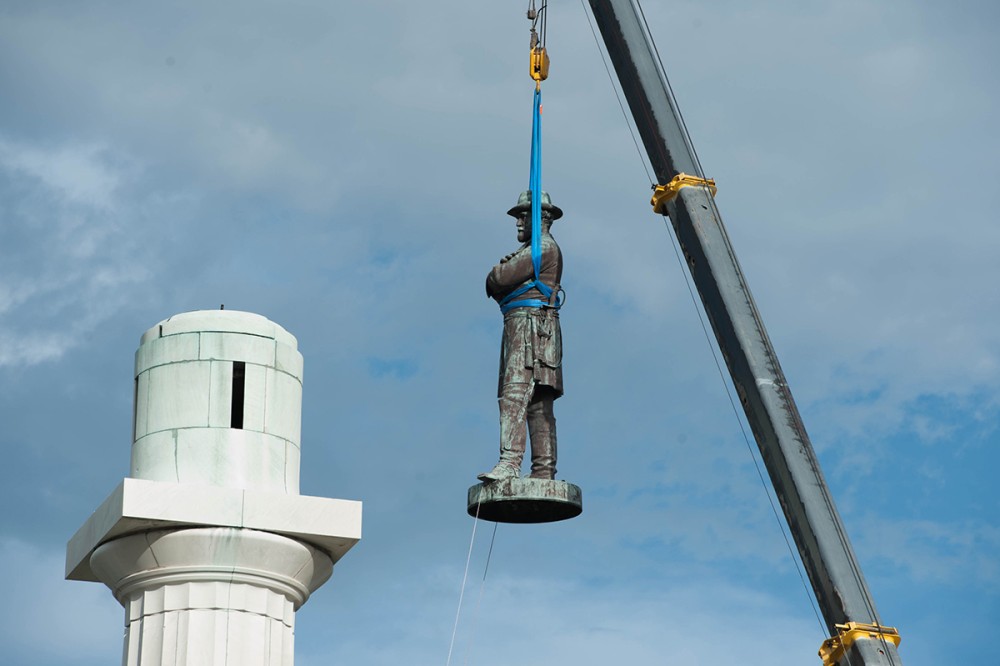
Don’t look away: this is about as beautiful as America looks from the interstate. Don’t look away, because the sight won’t last long.
Just past the Dysartsville Road overpass at Exit 94 on westbound Interstate 40 near Morganton, North Carolina, the Blue Ridge Mountains arise quickly—a massive hulking wall of tree-tufted granite, sedimentary limestone, and volcanic rock. The range ambles north like the shadow trail of some hunch-backed giant. If you stare at it the way you want to, you risk veering off the winding road and ending up in the eastbound lane. From the crest of the hill, you get a sense of the size of these mountains—the tallest ones east of the Rockies, a majestic and ancient ecosystem of extraordinary biodiversity. You can get lost in the spectacle—so long as you are not distracted by the gigantic 20-foot-by-30-foot Confederate flag.
The flag is a new feature of the landscape. It was put up a few years ago at a time when a lot of Confederate flags started flying. In the summer of 2016, at a QuikTrip in north Georgia, I saw some men in a beat-up Datsun truck circle the parking lot, an oversized rebel flag jury-rigged to a length of wind-bowed PVC pipe affixed to the trailer hitch. The flag puffed out like a mainsail and seemed destined to take control of the direction of the craft. This makeshift mast did not look like it would stay up for long, the laws of aerodynamics being what they are, but it held up long enough to make its presence known.





